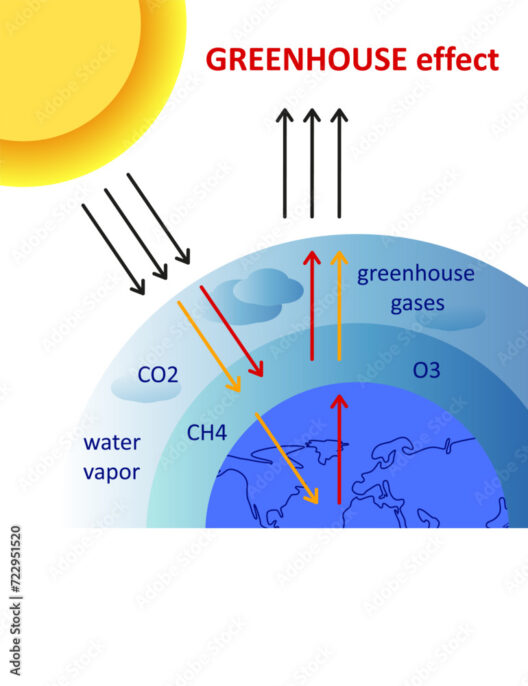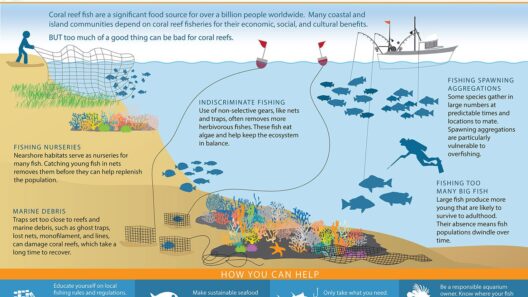The phenomenon of rising sea levels has ignited widespread concern across the globe. Much more than just a statistic, this escalating trend has profound implications for ecosystems, economies, and human settlements. It raises a fundamental question: How fast is sea level rising? Observing the shoreline’s gradual retreat evokes a sense of unease, hinting at the deeper environmental challenges humanity faces.
To understand the current landscape of sea level rise, we must first delve into the mechanisms involved, the empirical data that informs us, and the potential ramifications of this widespread alteration in our oceans. The pace at which sea levels are changing serves as a poignant indicator of climate change, leading many to marvel at this intricate interplay.
Factors Contributing to Sea Level Rise
Sea level rise is a multifaceted phenomenon influenced by various dynamics. Two primary mechanisms drive this change: thermal expansion and glacial melt. As global temperatures escalate due to anthropogenic greenhouse gas emissions, ocean waters absorb heat. Consequently, this thermal expansion contributes significantly to rising sea levels, as water occupies more volume when heated.
In tandem with thermal expansion, the melting of glaciers and polar ice sheets accelerates the influx of water into the oceans. Greenland and Antarctica, in particular, serve as bellwethers for sea level projections. The alarming rate at which these massive ice formations disintegrate poses a formidable threat not only to coastlines but also to global weather patterns.
The Interaction with Natural Events
Additionally, natural phenomena such as tectonic activity and sediment compaction can influence local sea levels, resulting in spatial variations that complicate our understanding of the overall trend. Regions experiencing significant subsidence may face exacerbated sea level encroachment. This reinforces the notion that sea level rise is not a uniform experience; rather, it is an assemblage of localized forces intertwined with the planet’s climatic upheaval.
Decoding the Data: Acceleration of Sea Level Rise
In examining historical data, it becomes evident that sea level rise is not merely linear; the rate of increase is accelerating. For much of the 20th century, sea levels rose at an approximate pace of 1.4 millimeters per year. However, by the early 21st century, this figure had surged to between 3 to 4 millimeters annually, a disparity that remains deeply troubling.
Recent analyses suggest that this acceleration could intensify. Projections indicate that, if current trends persist, we may witness a rise of one to two meters by the end of the century. This projection is grounded in the observation that many tipping points in the climate system may lead to irreversible outcomes, such as the complete collapse of the West Antarctic Ice Sheet. Such events would unleash cataclysmic levels of water into the oceans, exacerbating the rise at an unprecedented rate.
The Impacts: A Ripple Effect
The repercussions of rising sea levels extend far beyond the immediate threat of inundation. Coastal communities, often densely populated and economically significant, are particularly vulnerable. The risk of flooding, saltwater intrusion, and damage to critical infrastructure paints a dire picture for millions. This burgeoning crisis has prompted a reevaluation of urban planning and disaster preparedness, leading to increased investment in resilient infrastructure and innovative engineering solutions.
Moreover, the environmental consequences are profound. Ecosystems, particularly wetlands and coastal habitats, are increasingly under siege. Many species are forced to migrate or adapt as their habitats become submerged. The delicate balance of estuarine environments is disrupted, leading to potential declines in biodiversity and the loss of vital ecosystem services. These changes reverberate through local fisheries and agriculture, impacting food security and livelihoods.
The Psychological Dimension: Why Should We Care?
The complexity of sea level rise imbues it with a fascinating duality. On one hand, it represents a scientific challenge; on the other, it epitomizes a moral imperative. The reality is that rising sea levels disproportionately affect those least responsible for climate change. Communities in developing nations and marginalized groups often lack the resources to adapt to or mitigate the effects of environmental changes. This raises profound ethical concerns about equity and justice in addressing climate impacts.
Fostering Awareness and Action
As we grapple with the multifarious threats posed by sea level rise, fostering public awareness becomes crucial. Education serves as a catalyst for action, inspiring individuals and communities to engage with climate adaptation initiatives. Grassroots movements, policy changes, and civic participation are instrumental in combating this existential threat. Advocacy for sustainable practices and investments in renewable energies plays a pivotal role in addressing the root causes of climate change.
In Conclusion: The Urgency of Understanding
In conclusion, the question of how fast sea level is rising encapsulates a broader narrative about our planet’s future. The interplay of natural processes, anthropogenic influences, and socio-economic factors create a complex tapestry that demands our attention. Each millimeter of rise carries with it implications that transcend borders and generations.
Recognizing the links between scientific understanding and social action provides a path forward. The ongoing dialogue about the changes facing our planet reinforces the necessity for collective engagement. As we glean insights from this increasingly urgent issue, we must unite in our efforts to protect ecosystems, uphold human rights, and advocate for sustainable solutions. Only through understanding can we hope to navigate the uncharted waters ahead.





